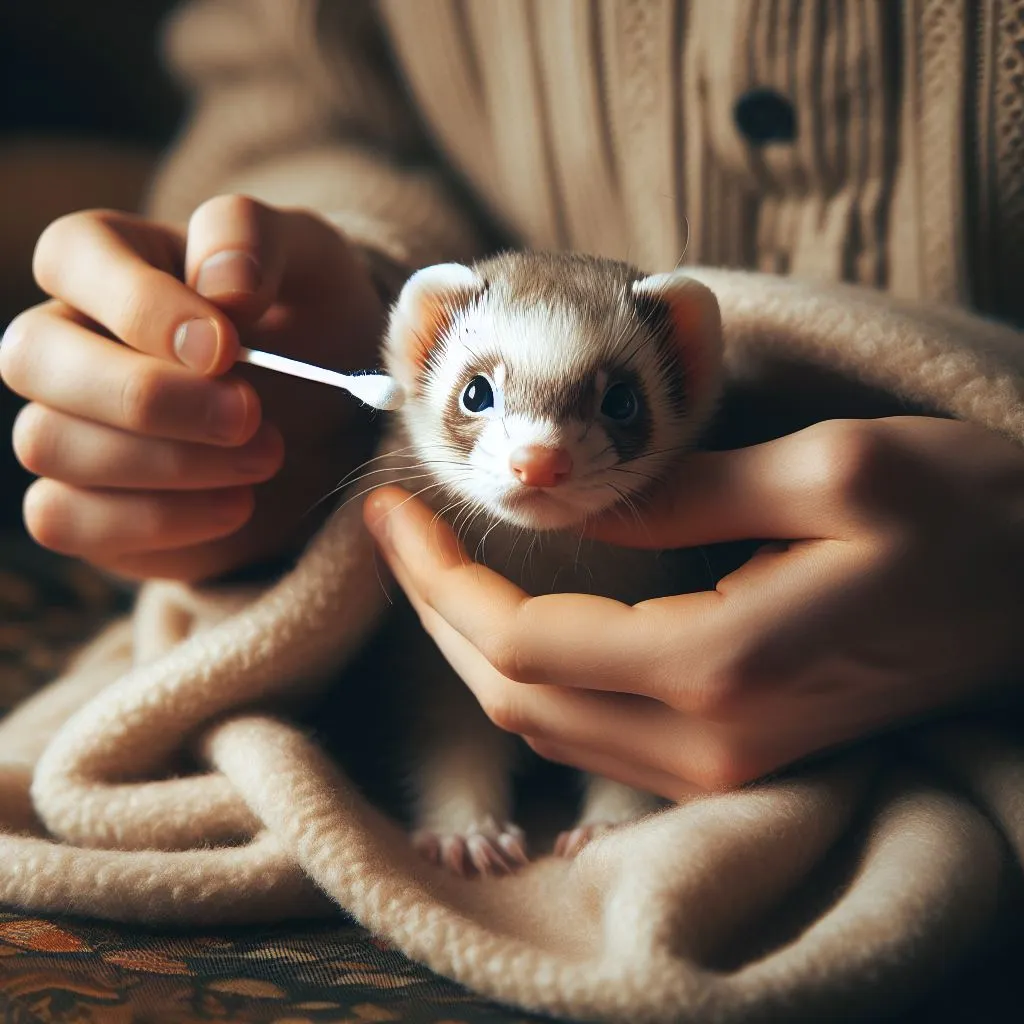How To Ferret Proof Your Home?

Ferrets are creatures that love to explore and more around to the places they wish. When they are moving around the house they may encounter some things that are not good for them which can result in them getting injured, sick, and other issues such as intestinal blockage. To prevent this a ferret owner should ferret proof his/her house. This article covers all of the topics related to ferret proofing which includes
- What Is Ferret Proofing?
- Why Should You Ferret Proof A House?
- Ferret Stashing
- Quick Ferret Proofing Tips (Recap)
- Ferret Proofing The Living Room
- Ferret Proofing The Kitchen And Bathroom
- Ferret Proofing The Bedrooms
- Ferret Proofing The Laundry Rooms
- General Considerations When Ferret Proofing Your House
- Key Takeaways
What Is Ferret Proofing?
Ferret proofing is the process to make sure that your house is safe for your ferrets. Ferrets have a unique anatomy with their slender body and a low to the ground build which makes them easily maneuver around tight corners and under various things. Ferret-proofing your house will make sure that your ferrets don’t get stuck, hurt ,or lost in different places in the house.
We will provide you the things that you need to do to ferret proof your house but first you need to get into the mindset of a ferret. To do this do the following steps.
- As ferret’s eye level is low to the ground but we as human beings are very high from the ground so first, go low to the ground with your hands and knees to understand the point of view of ferrets. This helps you to identify how your ferret identifies the world around them.
- Identify anything that has holes, dark places, places such as electric cords, vents, and spots under furniture that ferrets can go under and note them down one by one.
- Ferrets will go anywhere they want if they decide to, so completely blocking off these places will also not favor you.
Why Should You Ferret Proof A House?
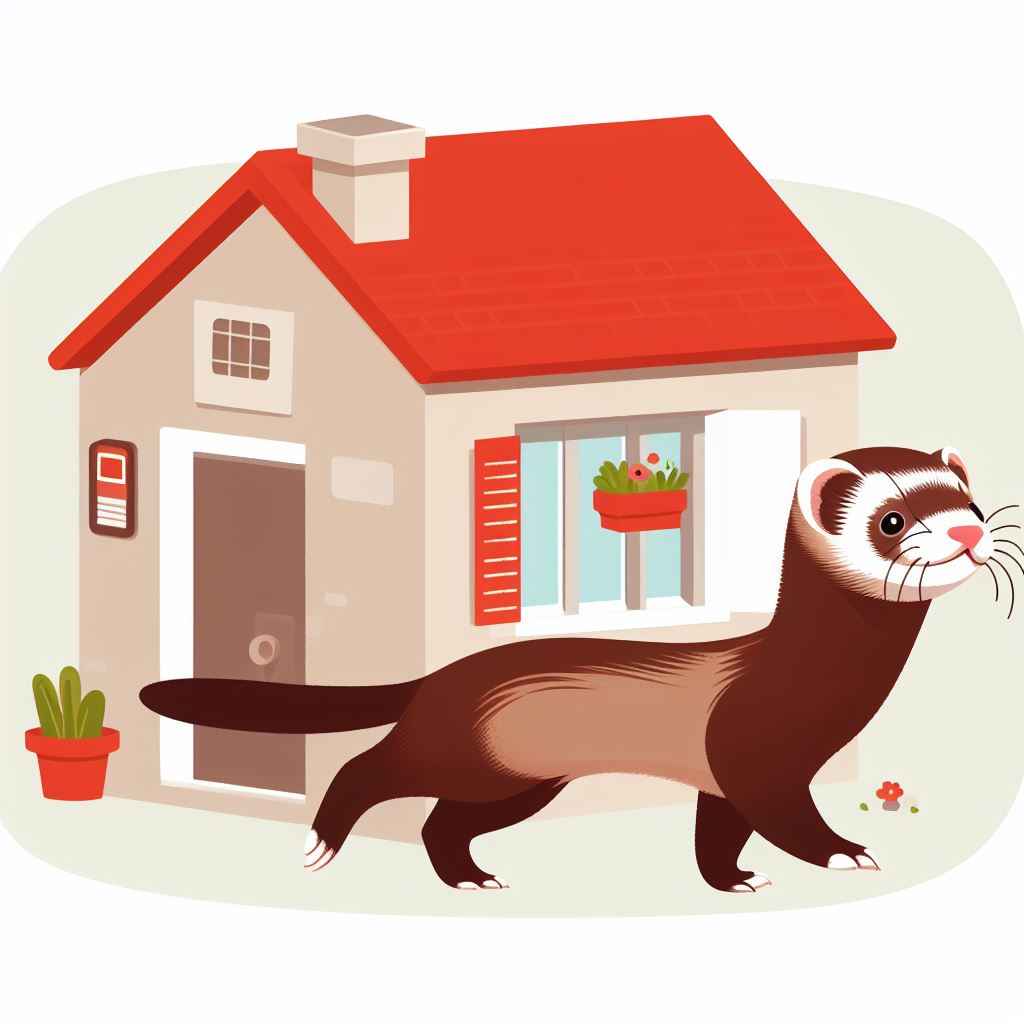
You should ferret proof a house because ferrets love to explore and will do anything to achieve it. They do not know what is dangerous for them and good for them. They can ingest anything that is around which can create intestinal blockage.
To fix this issue a ferret owner should ferret proof his/her house to ensure the safety of their ferrets. Not ferret-proofing a house can lead to accidental injuries or even cause the death of your ferrets.
Additionally it helps for the ferret owner to have a peace of mind and reduce the worries that they have about their ferrets. Ferret proofing the house should start immediately after you own a ferret.
Ferret Stashing
Ferrets love stealing items around the house and on the lookout for any new items around the house their end goal is taking them to their own place. They can also steal some dangerous items such as
- Toxic chemicals
- Human products
- Rubber items
- Keys
- Cell Phones
- Wallets
Check their place often and remove any dangerous items for your ferrets.
Quick Ferret Proofing Tips (Recap)
- Get low to the ground on their level.
- Do not block things just remove the temptation.
- Provide other enrichment activities
- Check their cage or their place for any dangerous items.
- Count your ferrets often to make sure all of them are present.
Ferret Proofing The Living Room

Ferrets love playing in the living room. Place under the couches, bookcases and other furniture places that ferrets love to hide inside the living room. Keeping the furniture too close can help ferrets be too close to windows which can be dangerous. So we advise you to keep a good distance between the furnitures.
Couches

Couches are dangerous to ferrets as they mostly have very thin fabrics underneath which can be easy for your ferret to get through. Due to this danger you need to ferret proof the couch and to do that follow these steps:
- Unscrew the legs and set them directly to the floor which can prevent your ferrets from accessing the tiny gaps under the couch.
- Choose a couch that is higher from the ground than the normal couches if you are looking to buy a new one. It will prevent your ferret from spending lots of time underneath it.
- Purchasing a thin sheet of plywood or a thick sheet of plastic to cover the bottom part of your couch can be helpful if you like to do things yourself.
Furniture such as Recliners, futons, and couches that fold into beds are dangerous to your ferrets. Ferrets can climb into their mechanisms and become injured or even dead.
Rocking chairs are also dangerous to your ferrets as your ferrets can be stepped on when you are sitting on them. To prevent this keep these types of furnitures in a ferret forbidden room.
Closets

Closets are used to store things such as clothes, dishes, bedsheets.etc which are the things that ferrets love the bury themselves inside. To prevent this use locks that are not easy to open and install them on the bottom doors. Your ferrets might get inside and get locked in the closet if you put the locks in the middle and higher.
TV Stands

TV Stands can be a great place for your ferrets to move around and explore. The television should be placed on the wall to avoid any accidents.
After that, lift the tv stand from the ground from 20 to 30 cm. Remove anything from the first two shelves in the cabinet so it cannot climb through them.
Bookcases

Bookcases can be challenging as ferrets can damage the things present in its lower parts. To prevent this do not put anything that you wouldn’t want to be damaged.
You can also put some ferret friendly toys so that they will play with it thus distracting them. Also make sure that your ferrets cannot gain access to other dangerous areas with the help of the bookcases.
Fireplaces
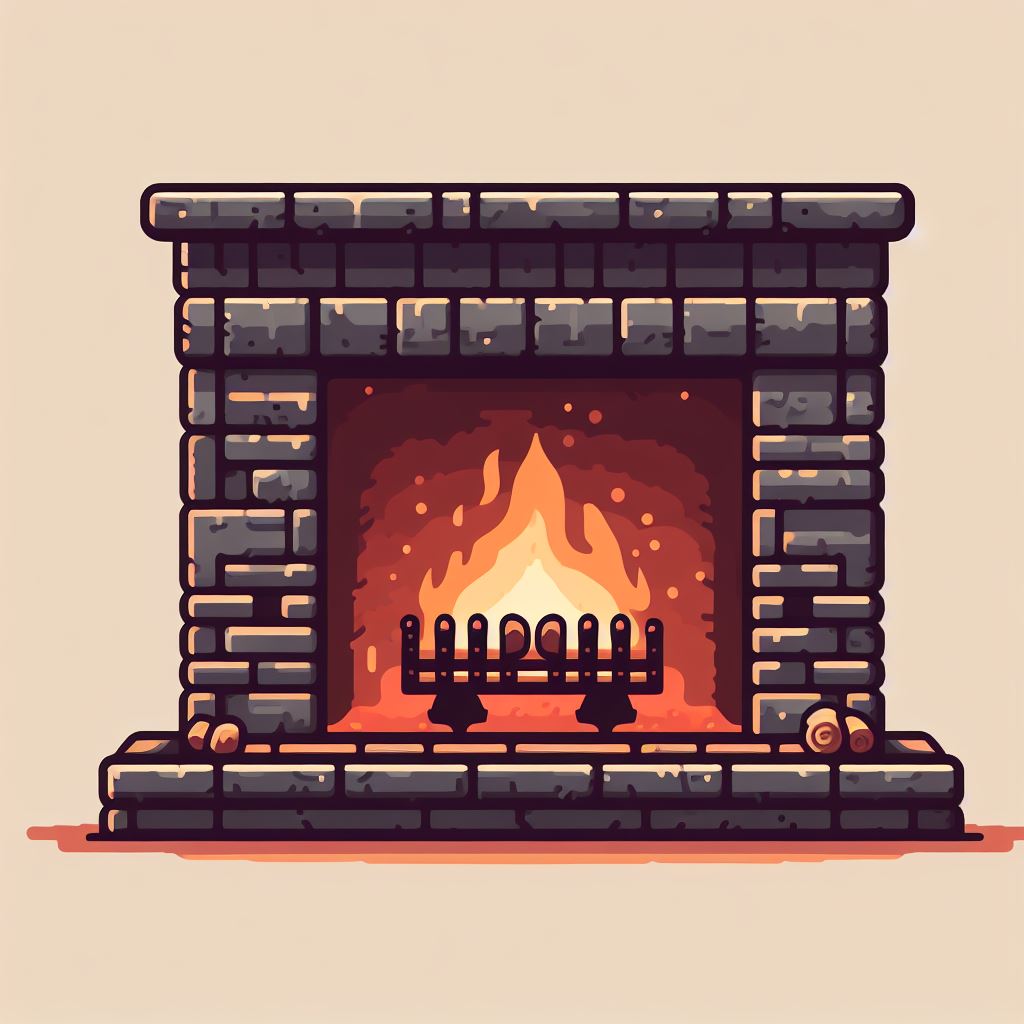
Fireplaces can be dangerous for your ferrets as it can get very hot which can be harmful for your ferrets. Your ferret’s health can be in danger every time the temperature rises above 85 degrees according to L. Vanessa Gruden in Paw Printz, July – August, 1999.
To prevent this issue you need to have a door that closes the fireplace. Count your ferrets and check the fireplace before lighting a fire as ferrets can roam around the room and accidentally go in the fireplace leading to a bad experience.
Houseplants

Houseplants can be dangerous for your ferrets as they can ingest some plants that are toxic for them. To prevent this keep your houseplants away from access on plant stands or counters. Toxic plants should not be kept inside your house so check whether the plant is toxic for your ferret.
According to Ferret.org the following are the plants that are toxic for your ferrets
- Aloe vera
- Amaryllis
- Azalea
- Baby’s breath
- Begonia
- Carnation
- Castor bean
- Chrysanthemum
- Cyclamen
- Daffodil
- Gladiola
- Hosta
- Ivy
- All lily species
- Milkweed
- Morning glory
- Oleander
- Poinsettia
- Pothos
- Sago palm
- Tomato plants
- Tulips
- Narcissus
- Rhododendron
- Yew
Ferret Proofing The Kitchen And Bathroom
Kitchen and Bathroom can be dangerous for your ferrets because ferrets can get inside cabinets, injured due to various kitchen appliances ,etc. Ferret proof the following areas of the kitchen and bathroom if your ferret has access to it.
Cabinets
Ferrets can get inside the cabinets and find various small objects that you might not notice normally. To ferret proof the cabinets of your kitchen follow these steps
- Close the holes in toe kicks or any open spaces to prevent ferrets squeezing into it. Your ferrets can be lost for sometime if the holes are present in the cabinets.
- The bottom of a storage cabinet should be a drawer as it is much harder for your ferrets to open a drawer rather than opening a door.
- Do not keep any dangerous and toxic items in the lower kitchen and bathroom cabinets as it is very accessible to your ferrets.
- Purchase child safety locks with a very small opening to keep your ferret out. Relocate the items such as bathroom items to higher areas to prevent any accidents.
- Close the cabinet drawers so that your ferrets cannot climb on them. Keep the sharp knives and instruments in the upper cabinets as ferrets can be injured or hurt by them.
Kitchen Appliances

Kitchen Appliances such as refrigerators can be dangerous for your ferrets because your ferrets can get underneath it which can cause difficulty due to the exposed mechanical parts and fans.
To prevent any problems, lower your refrigerator by using the adjustable foots so that your ferrets cannot get underneath them.
Some refrigerators have tubing that ferrets love to chew which can cause the refrigerator to not work. To prevent this issue push your refrigerator or cabinet against the wall to minimize the space and block all of the openings.
Ovens and dishwashers should be closed as it might be tempting for your ferret if it gets inside it. To prevent this check your ovens and dishwashers before starting it and count your ferrets to check the location of your ferrets.
Bathroom Appliances
Bathroom appliances can be dangerous for your ferret because your ferrets can open the toilet lid and get inside of it. Ferrets can also accidentally ingest any bathroom products which can cause blockage in the digestive tract. To prevent this issue follow these steps
- Close the toilet lid when it’s not in use. Install a heavy toilet lid or toilet safety lock so that they can’t open it themselves.
- Don’t leave the bathtub by yourself or keep the ferret inside the cage before the bath. Try to find a good ferret cage that your ferret can’t just simply get out of it.
- Use cotton bathmat instead of rubber non-stick backing as ferrets love chewing rubber. If rubber is ingested by ferrets then it can cause intestinal blockage.
Ferret Proofing The Bedrooms
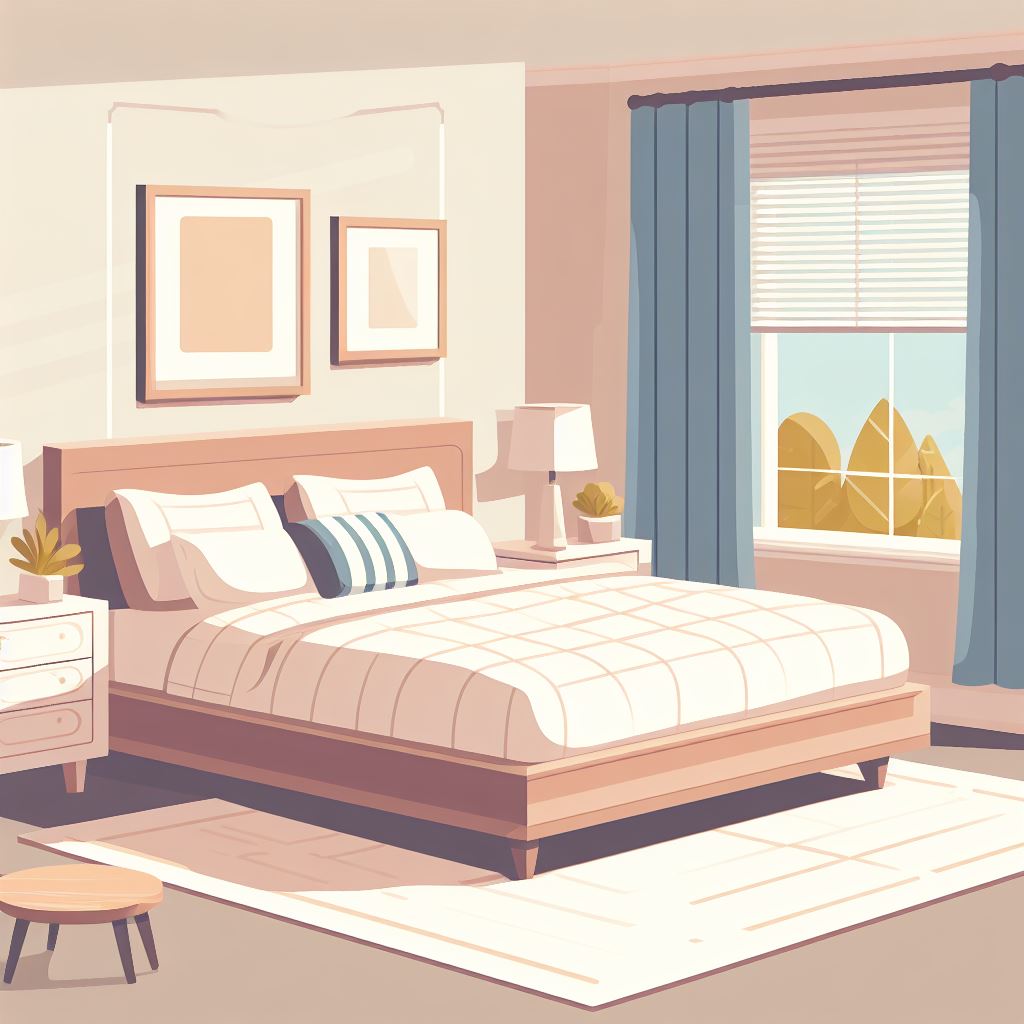
Bedrooms can be dangerous for your ferrets because certain parts of the bedrooms such as the nightstand contains items such as medications, essential oils, items made up of silicon and rubber which can cause intestinal blockage if it is ingested. To prevent this issue follow these steps
- A bed with a box spring typically features thin fabric on its underside, akin to a couch. To create a ferret-friendly barrier, a simple solution is to place a fitted sheet upside down on it. Regularly inspect the sheet for any signs of damage or holes.
- Keep the nightstand items in a closed drawer or in higher cabinets.
- Safely close the dresser drawers at all times as ferrets can accidentally get squashed behind them. Check the furniture spacing to ensure ferrets don’t get into areas they shouldn’t be around.
Ferret Proofing The Laundry Rooms
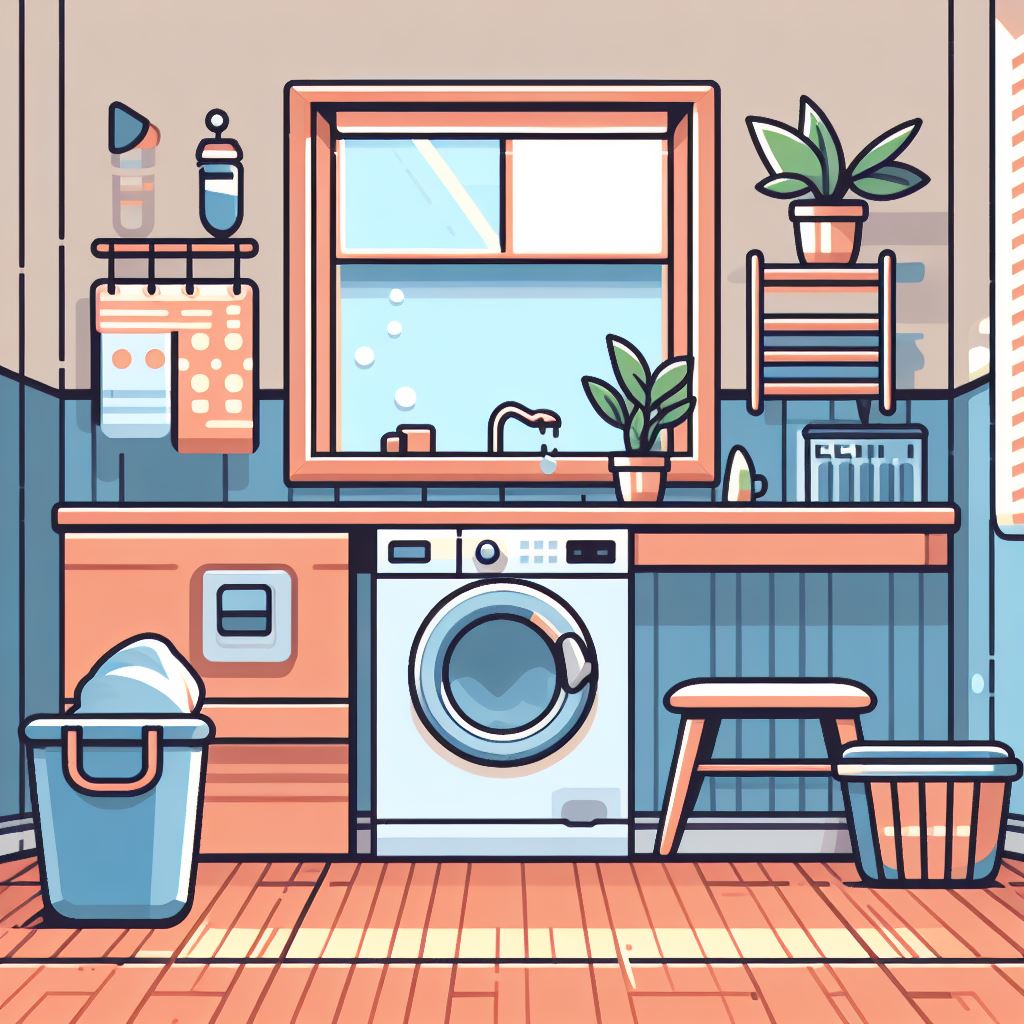
In the laundry room ferrets love to burrow inside the clothes for a good nap if they are soft, warm and smell like their owner. It will be hard for your ferret to be active again if it has slept in that comfortable environment.
Ferrets can be accidentally stepped on and even end up in the washing machine or dryer. Due to their ability to fit into tight spaces, ferrets are drawn to the gap between your washer and dryer.
While using pool noodles to block the opening may seem like an option, ferrets can easily tear them apart and may face difficulty passing the pieces.
A more effective solution is to tightly roll up a blanket or large towel and insert it into the gap. Ensure a snug fit to prevent the ferret from burrowing underneath or pulling it out.
Check your clothes when keeping it in the laundry to identify whether your ferrets are burrowed inside the clothing. The laundry room also has lots of substances that can be harmful for your ferrets if it’s ingested. Also keeping the washer or dryer closed when you’re not using them can prevent ferrets from getting behind or underneath them.
General Considerations When Ferret Proofing Your House
The following are some of the general considerations when ferret proofing your house
Door Gaps
Ferrets can get into door gaps which can lead them to places they should not be around. To prevent this purchase and install a door gap stopper from a shop nearby. Avoid buying a door gap stopper that is made of rubber or silicon.
Windows
Ferrets can get outside the house or get into dangerous places by using windows as a gateway. To prevent this follow these steps
- Check the windows for any holes or tears and make them patched.
- Remove and replace all of the older window frames with cracking or peeling seals and paint.
- Do not use sliding windows that don’t stay open reliably as it can injure your ferrets.
Heating And Cooling Registers Covers
Inspect floor or low-wall heater and AC vents in your home to ensure stability and immovability. Replace any vents that could grant your ferret entry, as retrieving your friend from the ventilation system can be challenging otherwise.
Key Takeaways
- Get into the habit of performing ferret headcounts often when your little ones are out and about playing. This practice can help a great deal in making sure they are safe and also help you keep tabs on where they are.
- Ferrets are notorious for finding comfortable little hideaways for their nap time and once they have found a cozy nook or cranny for their nap time you may have to just wait around until they wake up and reappear.
Last Updated on 28 February 2024
Waman Nuka is a seasoned wordsmith and a passionate animal enthusiast with decades of experience in the world of animal care. With a deep love for all creatures great and small, Waman’s journey in the realm of animals started as a young boy exploring the lush forests surrounding his childhood home.


